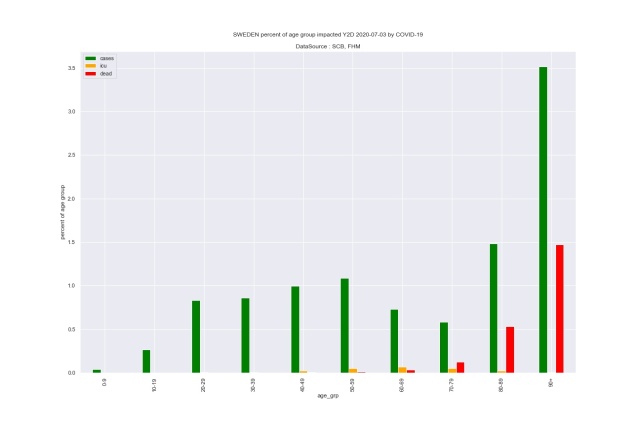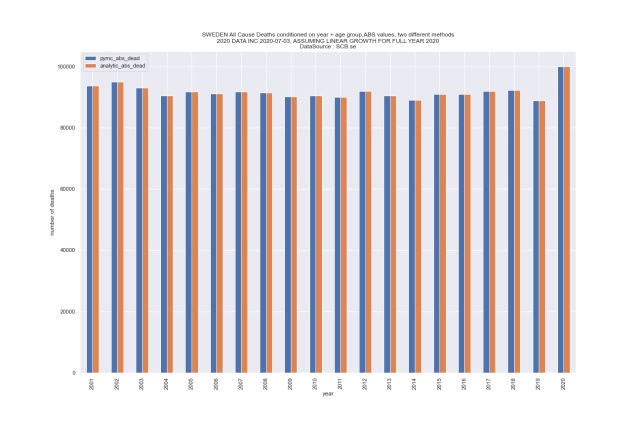- Joined
- Jul 10, 2008
- Messages
- 65,870
- Points
- 113
Lockdowns – the Illusion of Controlling a Virus
Posted on August 1, 2020 by swdevperestroika
Humans like to be in control. Or more correctly, feel like they are in control. Because the truth is that for most aspects of our lives, we are far from being in control. Instead, we are living in constant uncertainty, and for most of us, that’s a very unpleasant feeling, a feeling that we often suppress, for the “feelgood” illusion of being in control.
Go back to January 2020, and think for a while about the plans for summer 2020 you made then… did those plans materialize…?
Something unexpected happened, something that most of us did not see coming…. – Covid-19.
So, we thought we were in control of our lives, but then this Covid-thing came about, and all of sudden, all of our plans were destroyed. The entire planet was – and is – severely impacted by something few of us saw coming 6-7 months ago.
Now, 5 months into the epidemic, Governments are trying to be “in control” of the virus, primarily by means of various degrees of “Lockdowns” of their citizens.
Lockdowns with for now hidden, but most likely huge future costs, in terms of lives lost as well as of financial losses, on individual as well as aggregate levels.
The question is: are the virus mitigation measures taken by the “world leaders” making any positive impact….?
I took a quick look at the data, and I’m far from convinced that we humans can “control” the virus… instead, it seems like the virus is going to do its thing, regardless of what restrictions our governments put upon us.
Let’s have a look at the data: first, a regression with the OxCGRT index as predictor for deaths per million, for 94 different countries:

Ooops…! There appears to be no statistical association between the degree of lockdown and the outcome, that is, the number of deaths…!
Now, as I’m sure we all know (right…?) “correlation does not imply causation”, but still, it’s at least to me remarkable that there is no relationship at all between the predictor and the outcome (deaths per million).
Since a simple statistical model has no ‘direction’, temporal or otherwise, I could have imagined either a negative slope, thus indicating that more severe lockdowns lead to fewer deaths, or a positive slope, indicating that governments with high level of deaths will have a tighter lockdown… but nope, in the data, there’s no relationship at all… which to me is quite interesting….
[For the technically curious : the orange lines express the uncertainty in the regression, the 89% credible interval for the regression line, and the blue:ish shaded area shows the 89% credible interval for posterior samples at each OxCGRT value].
So, if we’d be interested in predicting the number of deaths per million in a country, and the only data available we’d have for doing that prediction is the level of lockdown, we’d be no wiser from having a look at the lockdown index of that country – it simply tells us nothing about the amount of deaths.
Next, let’s have a look at the trends for OxCGRT and deaths per million for a few (14) different countries:

Again, when looking carefully at the data, it’s very hard – impossible – to detect any relationship between the level of lockdown and the number of deaths.
Finally, let’s plot these 14 countries, with the OxCGRT and deaths_per_M on individual graphs:

I don’t know about you, but to me it looks like “regardless the level of Lockdown, the virus will do its thing”. That is, we humans do not “control” the virus, no matter how stringent Lockdowns we impose. There seem to be other factors much more important for determining the outcome (see here) And here is an excellent post by Stacey Rudin that elaborates further on the theme.
Posted on August 1, 2020 by swdevperestroika
Humans like to be in control. Or more correctly, feel like they are in control. Because the truth is that for most aspects of our lives, we are far from being in control. Instead, we are living in constant uncertainty, and for most of us, that’s a very unpleasant feeling, a feeling that we often suppress, for the “feelgood” illusion of being in control.
Go back to January 2020, and think for a while about the plans for summer 2020 you made then… did those plans materialize…?
Something unexpected happened, something that most of us did not see coming…. – Covid-19.
So, we thought we were in control of our lives, but then this Covid-thing came about, and all of sudden, all of our plans were destroyed. The entire planet was – and is – severely impacted by something few of us saw coming 6-7 months ago.
Now, 5 months into the epidemic, Governments are trying to be “in control” of the virus, primarily by means of various degrees of “Lockdowns” of their citizens.
Lockdowns with for now hidden, but most likely huge future costs, in terms of lives lost as well as of financial losses, on individual as well as aggregate levels.
The question is: are the virus mitigation measures taken by the “world leaders” making any positive impact….?
I took a quick look at the data, and I’m far from convinced that we humans can “control” the virus… instead, it seems like the virus is going to do its thing, regardless of what restrictions our governments put upon us.
Let’s have a look at the data: first, a regression with the OxCGRT index as predictor for deaths per million, for 94 different countries:

Ooops…! There appears to be no statistical association between the degree of lockdown and the outcome, that is, the number of deaths…!
Now, as I’m sure we all know (right…?) “correlation does not imply causation”, but still, it’s at least to me remarkable that there is no relationship at all between the predictor and the outcome (deaths per million).
Since a simple statistical model has no ‘direction’, temporal or otherwise, I could have imagined either a negative slope, thus indicating that more severe lockdowns lead to fewer deaths, or a positive slope, indicating that governments with high level of deaths will have a tighter lockdown… but nope, in the data, there’s no relationship at all… which to me is quite interesting….
[For the technically curious : the orange lines express the uncertainty in the regression, the 89% credible interval for the regression line, and the blue:ish shaded area shows the 89% credible interval for posterior samples at each OxCGRT value].
So, if we’d be interested in predicting the number of deaths per million in a country, and the only data available we’d have for doing that prediction is the level of lockdown, we’d be no wiser from having a look at the lockdown index of that country – it simply tells us nothing about the amount of deaths.
Next, let’s have a look at the trends for OxCGRT and deaths per million for a few (14) different countries:

Again, when looking carefully at the data, it’s very hard – impossible – to detect any relationship between the level of lockdown and the number of deaths.
Finally, let’s plot these 14 countries, with the OxCGRT and deaths_per_M on individual graphs:

I don’t know about you, but to me it looks like “regardless the level of Lockdown, the virus will do its thing”. That is, we humans do not “control” the virus, no matter how stringent Lockdowns we impose. There seem to be other factors much more important for determining the outcome (see here) And here is an excellent post by Stacey Rudin that elaborates further on the theme.








